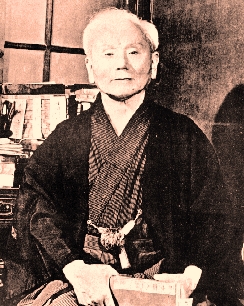Ozawa Cup Started by Shihan Osamu Ozawa in 1981. He was a direct pupil of Gichin Funakoshi and one of the founding members of the Japan Karate Association - JKA.
The Ozawa Cup today is the largest traditional karate tournament of its kind.
MissionTo have the largest, fairest and most organized traditional karate tournament in the world.
Company OverviewThe Ozawa Cup is one of the largest traditional karate tournament of its kind in the world today. It draws around 700-900 individual competittors and is attended by 20-30 countries from around the world.
During the tournament, Karate and Kobudo Seminars are also conducted by some of the best athletes and instructors including some of the most senior Japanese Instructors in the world.



The Ozawa Cup today is the largest traditional karate tournament of its kind.
MissionTo have the largest, fairest and most organized traditional karate tournament in the world.
Company OverviewThe Ozawa Cup is one of the largest traditional karate tournament of its kind in the world today. It draws around 700-900 individual competittors and is attended by 20-30 countries from around the world.
During the tournament, Karate and Kobudo Seminars are also conducted by some of the best athletes and instructors including some of the most senior Japanese Instructors in the world.
Dojo Kun: rules to live by
Students of the Las Vegas Shotokan Karate dojo live by
Grand Master Funakoshi's five precepts called Dojo Kun
(As remembered by Shihan Ozawa with his teacher)
|
| DOJO KUN
The Five Precepts of Master Funakoshi
|
Hitotsu. Jinkaku kansei ni tsutomu beshi
We shall endeavor to build our character
|
Hitotsu. Makoto no michi o mamoru beshi
We shall be faithful in our study
|
Hitotsu. Doryoku no seishin o yashinau beshi
We shall cultivate courage and tenacity
|
Hitotsu. Reigi o omonzu beshi
We shall attach great importance to etiquette
|
Hitotsu. Kekki no yu o imashimu beshi
We shall be wary of foolishness
|

SHOTOKAN KARATE
A 400 YEAR HISTORY OF TRADITION

In Okinawa, a miraculous and mysterious martial art has come down to us from the past: Karate-do: "the way of Karate".
It is said that one who masters its techniques can defend one’s self readily and can perform remarkable feats.
The essence of true Karate-do is this:
“That in daily life one’s mind and body be trained and developed in a spirit of humility and that in critical times one be devoted utterly to the cause of justice.”
The origins of Shotokan Karate can be traced back to the island of Okinawa over 400 years ago. Gichin Funakoshi introduced it formally to Japan in 1922. Today he is known as the “father of modern karate”.
Master Funakoshi refined and standardized the techniques of this art. He deeply believed that Shotokan Karate was a means of developing a strong character and self-defense. He did not believe in resolving conflict with violence and he emphasized self-protection and respect for one another.
In the 1940’s, a group of Shotokan karate masters founded the prestigious Japan Karate Association (JKA) to ensure that the traditions of this martial art would be upheld. One of those karate masters was Master Osamu Ozawa, a direct student of Master Funakoshi. While alive, Master Ozawa was the most senior Japanese instructor residing in the Western world. He received his 8th degree black belt from Prince Higashikuni, uncle to Emperor Hirohito of Japan. In 1981, he founded the Las Vegas Shotokan Karate dojo and in 1995, Master Ozawa at age 70 turned the school over to James Tawatao, a student of his since 1981. Master Ozawa passed away in early 1998.
With millions of karate students around the world, Shotokan Karate is today the most popular style of traditional karate .
|

Shotokan
Calligraphy by:
Shihan Osamu Ozawa

Karate do
Calligraphy by:
Shihan Osamu Ozawa

No comments:
Post a Comment